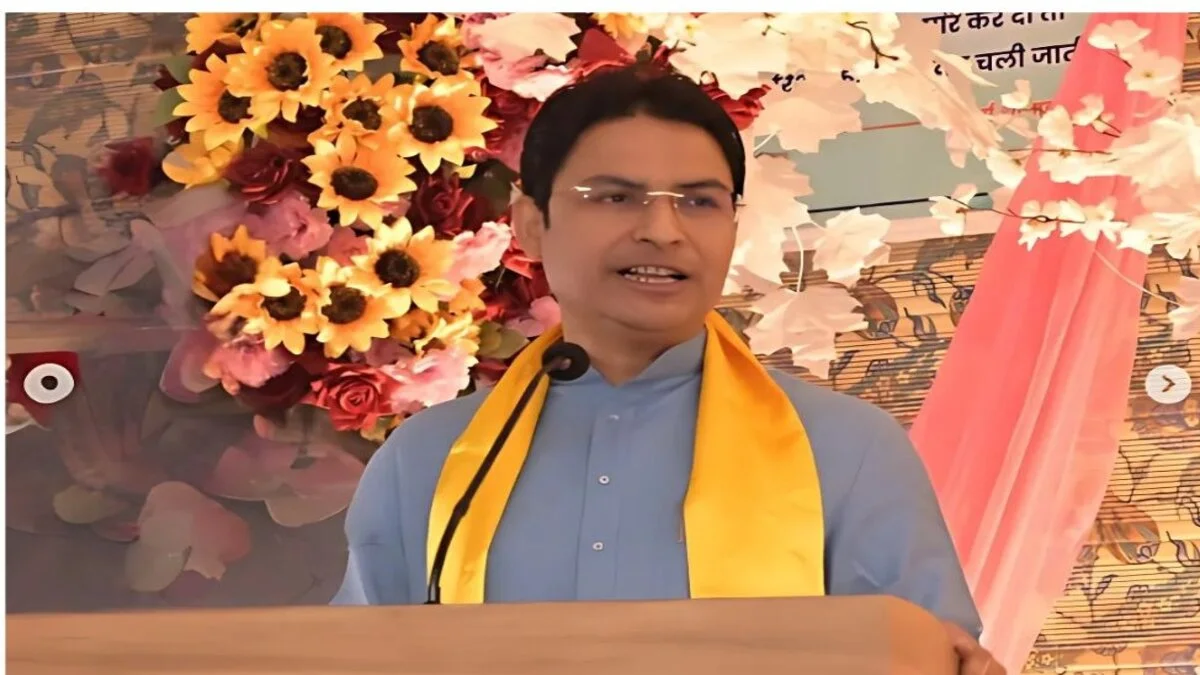Introduction: A High-Stakes Standoff in India’s Most Vulnerable Corridor
India’s Siliguri Corridor, a narrow 22-kilometer stretch often called the “Chicken Neck,” is central to a heated political and security debate. The corridor is the only land route connecting mainland India to the northeastern states, making it a critical strategic zone. A planned rally by an Islamist organization in Fulbari, near Siliguri, has triggered a fierce backlash from the BJP, with Darjeeling MP Raju Bista demanding West Bengal Chief Minister Mamata Banerjee revoke permission for the event.
Scheduled for April 15, the rally has raised alarms over potential unrest, with BJP leaders claiming that outsiders are being mobilized to stir tensions in a region where Muslims make up just 5% of Darjeeling’s population. The MP’s letter to Mamata warns of “anti-national statements” and possible violence, urging heightened security measures, including a flag march.
The question is: Will this rally become another flashpoint in Bengal’s volatile politics, or will authorities prevent a security crisis in one of India’s most sensitive areas?
The Rally in Focus: Who’s Behind It and Why?
The protest is reportedly organized by an Islamist group opposing recent amendments to the Wakf Act, which governs Muslim charitable properties. While the group’s exact name remains unclear, BJP MP Raju Bista alleges that participants are being brought in from outside West Bengal, raising suspicions of external influence.
Bista’s letter claims the group has a history of inciting violence, though no specific incidents are cited. The more significant concern, however, is the location—Fulbari lies close to the Siliguri Corridor, a region already under scrutiny due to its proximity to China and Bangladesh.
Local authorities have yet to confirm or deny the BJP’s claims, but the state government’s silence has only fueled speculation.
Why the Chicken Neck Is a National Security Priority
The Siliguri Corridor is often described as India’s most vulnerable geographical point. If disrupted, it could cut off seven northeastern states from the rest of the country. This isn’t just theoretical—during the 2017 Doklam standoff with China, military strategists closely monitored the corridor for potential threats.
Historically, the area has seen insurgent activity, including movements by groups like the Kamtapur Liberation Organization (KLO). Adding to the tension, the region has a complex demographic mix—Gorkhas, Bengalis, Adivasis, and a small Muslim population. Any large-scale protest here risks inflaming existing tensions.
Security experts warn that mass gatherings in such a sensitive zone require extreme caution. “Even peaceful protests can be exploited by bad actors,” says a retired Army officer familiar with the region.
Mamata Banerjee’s Tough Choice: Permit or Ban?
Chief Minister Mamata Banerjee is now facing a difficult decision. Allowing the rally could be seen as ignoring security risks, while banning it may trigger accusations of suppressing minority rights.
Her government has not yet responded to the BJP’s demands, but past actions suggest she may resist pressure. In 2019, her administration denied permission for a BJP rally featuring Amit Shah, citing law and order concerns. Now, the tables are turned—the BJP is demanding she do the same to an Islamist group.
Political analysts say Mamata must weigh her Muslim voter base against growing criticism of her handling of law and order. Recent clashes in Murshidabad over the Wakf Act amendments have already put her government on the defensive.
BJP’s Strategy: Security Concern or Political Move?
The BJP’s aggressive stance fits into its broader narrative of “national security first.” The party has long accused Mamata Banerjee of being soft on radical elements, and this rally gives them fresh ammunition.
However, critics argue the BJP is exaggerating the threat for political gain. The party has held rallies in sensitive areas, including Darjeeling, where it allies with the Gorkha Janmukti Morcha (GJM). Some see this as a double standard.
With the 2026 Bengal elections approaching, the BJP is keen to portray Mamata as weak on security—a strategy that helped it gain ground in the 2019 Lok Sabha polls.
Local Reactions: Fear, Anger, and Uncertainty
Residents of Darjeeling are wary. The hills have seen decades of unrest over demands for Gorkhaland, and another conflict is the last thing people want.
“We don’t need more trouble,” says a shopkeeper in Siliguri, who asked not to be named. “If outsiders come and create problems, we suffer.”
Others question why the rally is being held in such a sensitive location. “There are plenty of places in Bengal to protest. Why here?” asks a college student in Darjeeling.
Police are reportedly preparing for possible unrest, but whether they can prevent violence remains to be seen.
What Happens Next?
All eyes are on April 15. If the rally goes ahead, security forces will be on high alert. If Mamata cancels it, she risks backlash from Muslim groups. Either way, the political fallout will be significant.
The bigger question is whether this incident will set a precedent for managing protests in strategic zones. With India’s political climate increasingly polarized, the balance between security and democratic rights has never been more delicate.
Conclusion: A Test for Democracy and Security
The Siliguri Corridor rally is more than just another protest—it’s a litmus test for how India handles dissent in high-risk areas. Will security concerns override the right to assemble, or will political calculations dictate the response?
As tensions rise, one thing is clear: The Chicken Neck’s fragile peace hangs in the balance.










